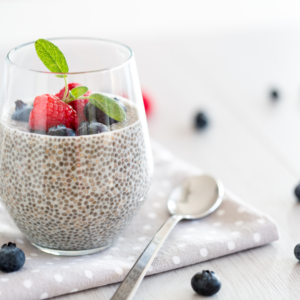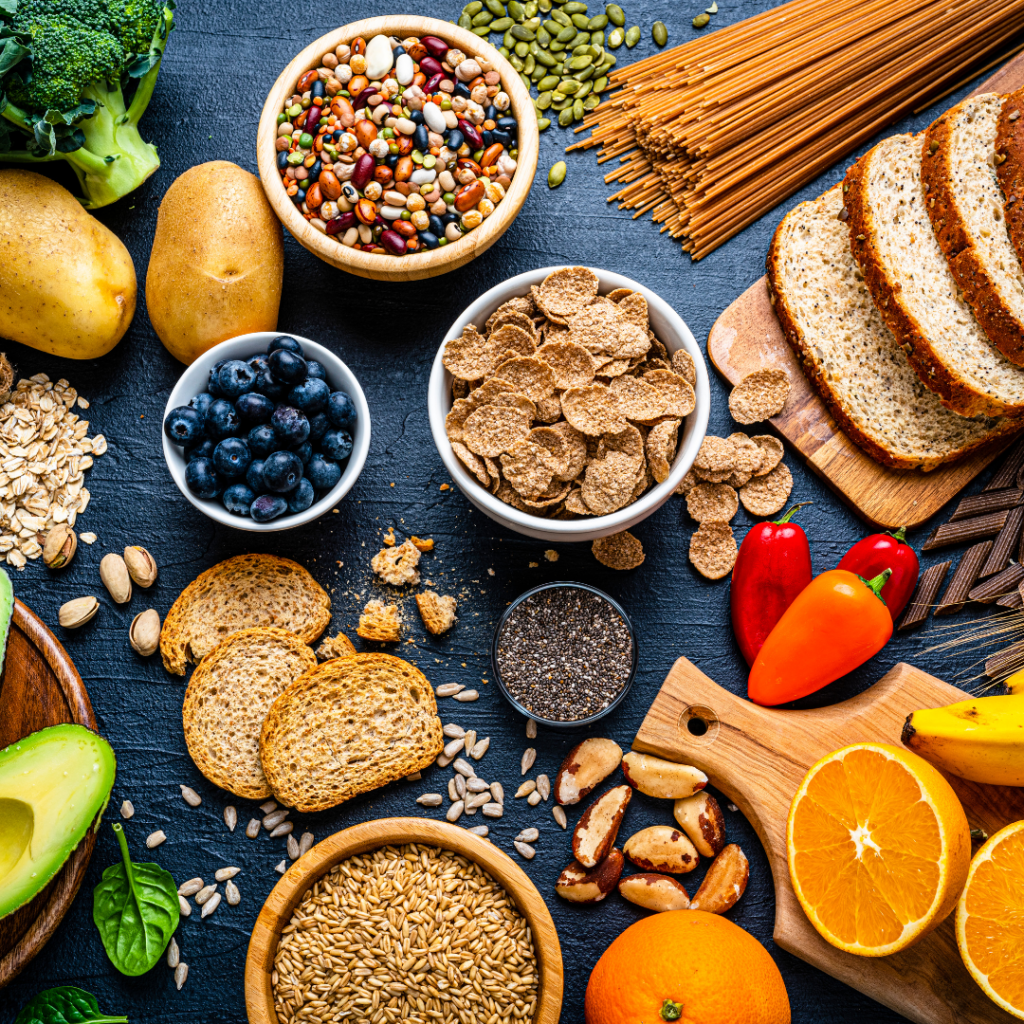Every year you’re introduced to some superfood promising to transform your health.
Foods with fancy names like acai, agave, goji berries, wheatgrass and Yuzu (which is a Japanese grapefruit).
But you already know about a simple superfood that has powerful health-boosting effects.
That superfood is fiber.
Yet only 5% of Americans eat the recommended amount. The American Heart Association recommends that women and men eat 25 grams and 38 grams of fiber a day from food, respectively. But on average, Americans eat only 10-15 grams of fiber a day.
Are you getting enough fiber in your diet and why should you care?
Because eating the recommended amount of fiber from food can transform your health in many ways.
The Benefits of Fiber
Soluble and insoluble fiber are two types of dietary fiber found in various foods, and they have different characteristics and health benefits.
Soluble fiber
Soluble fiber dissolves in water to form a gel-like substance in the digestive tract. It’s found in foods such as oats, chia seeds, barley, beans, lentils, fruits and some vegetables (i.e. carrots).

The health benefits of soluble fiber include:
- Lowering your cholesterol levels: Soluble fiber can help reduce LDL (bad) cholesterol levels by binding to cholesterol particles and removing them from the body.
- Regulating your blood sugar levels: Soluble fiber slows down the digestion and absorption of carbohydrates, which can help stabilize blood sugar levels and reduce the risk of diabetes.
- Promoting satiety: Foods high in soluble fiber tend to be more filling.
Insoluble Fiber
Insoluble fiber does not dissolve in water and passes through the digestive system largely intact. It’s found in foods like whole grains, wheat bran, nuts, seeds, and the skins of some fruits and vegetables.
The health benefits of insoluble fiber include:
- Promoting regular bowel movements: Insoluble fiber adds bulk to stool and helps prevent constipation by speeding up the passage of waste through the digestive tract.
- Preventing diverticulosis: Adequate intake of insoluble fiber may reduce the risk of developing diverticulosis, a condition characterized by small pouches forming in the colon wall.
- Supporting gut health: Insoluble fiber can serve as a prebiotic, providing nourishment for beneficial gut bacteria.
Fiber Benefits Blood Sugar Levels
Eating fiber can help prevent or mitigate insulin resistance primarily by stabilizing blood sugar levels and improving overall insulin sensitivity. Insulin resistance is a condition in which the body’s cells become less responsive to the effects of insulin, leading to elevated blood sugar levels.
Checkout the effects on your blood sugar levels when eating pizza alone versus pairing it with a fiber-filled salad.

Dietary Fiber Takeaways
- Both soluble and insoluble fiber contribute to general digestive health by preventing various gastrointestinal issues.
- Fiber-rich diets have been associated with a lower risk of chronic diseases, including heart disease, stroke, type 2 diabetes, and certain types of cancer.
- Fiber helps promote satiety.
- It aids in the management of blood sugar levels, making it beneficial for all individuals but particularly those with pre-diabetes and diabetes.
- Fiber can assist in lowering blood pressure and improving overall cardiovascular health.
- It supports a healthy gut microbiome by promoting the growth of beneficial gut bacteria.
- Fiber-rich foods are typically nutrient-dense and provide essential vitamins and minerals.
So how can you incorporate fiber into your diet to reap all those benefits?

Five Sources of Fiber
- Eat more whole grains:
- Oats: A bowl of oatmeal can provide around 4 grams of fiber.
- Brown rice: 1 cup of cooked brown rice contains approximately 3.5 grams of fiber.
- Quinoa: 1 cup of cooked quinoa has about 5 grams of fiber.
- Whole wheat pasta or bread: Look for products that list “whole wheat” as the first ingredient for a higher fiber content.
- Enjoy whole fruits:
- Apples: A medium-sized apple with the skin can have around 4 grams of fiber.
- Berries (strawberries, raspberries, blueberries): One cup of these fruits provides roughly 4-8 grams of fiber.
- Pears: One medium pear contains about 6 grams of fiber.
- Bananas: A medium banana has about 3 grams of fiber.
- Eat your favorite veggies:
- Broccoli: 1 cup of cooked broccoli offers approximately 5 grams of fiber.
- Brussels sprouts: 1 cup of cooked Brussels sprouts contains around 4 grams of fiber.
- Carrots: One cup of chopped carrots has about 3.5 grams of fiber.
- Spinach: 1 cup of cooked spinach provides approximately 4 grams of fiber.
- Swap out meats for fiber-filled plant proteins like beans and legumes:
- Lentils: 1 cup of cooked lentils can give you up to 15 grams of fiber.
- Chickpeas: 1 cup of cooked chickpeas contains about 12 grams of fiber.
- Black beans: 1 cup of cooked black beans provides approximately 15 grams of fiber.
- Add raw nuts and seeds to your oats and salads:
- Chia seeds: 1 ounce (about 2 tablespoons) of chia seeds has around 10 grams of fiber.
- Almonds: 1 ounce of almonds contains about 3.5 grams of fiber.
- Try these fiber-filled snack options:
- Popcorn: Air-popped popcorn has around 4 grams of fiber per 3 cups.
- Raw vegetables: Snacking on raw carrots, cucumber, or bell peppers with hummus can add to your daily fiber intake.
As you increase your fiber intake, be sure to do it gradually to avoid digestive discomfort and drink plenty of water. And as always, check with your primary care physician to see what’s best for you depending on your medical history.
So instead of searching for the next superfood to transform your health, focus on the simply adding in more fiber-filled foods.
P.S. Join my FREE newsletter, Reclaiming Wellness and have tips sent directly to your inbox!


